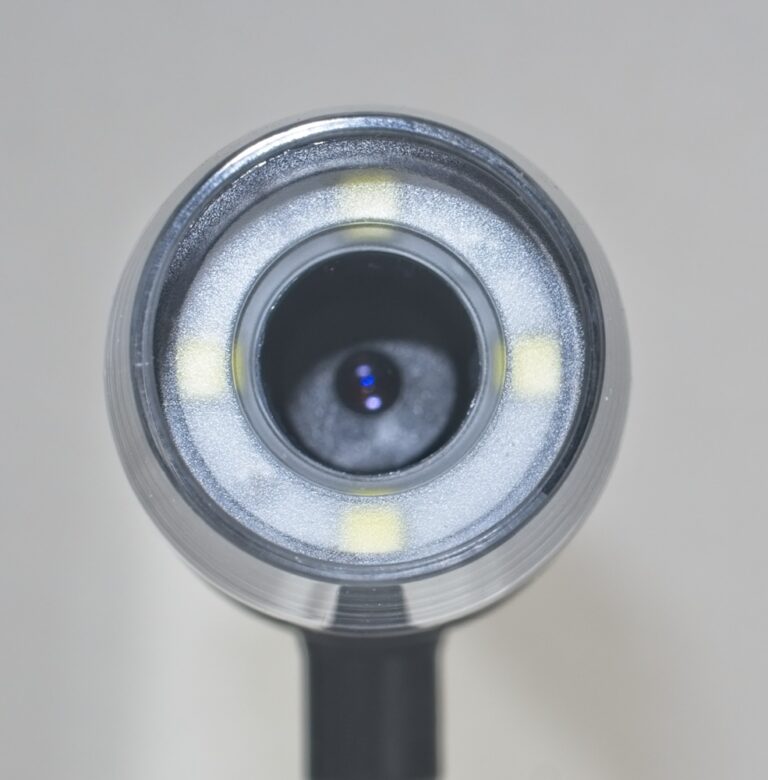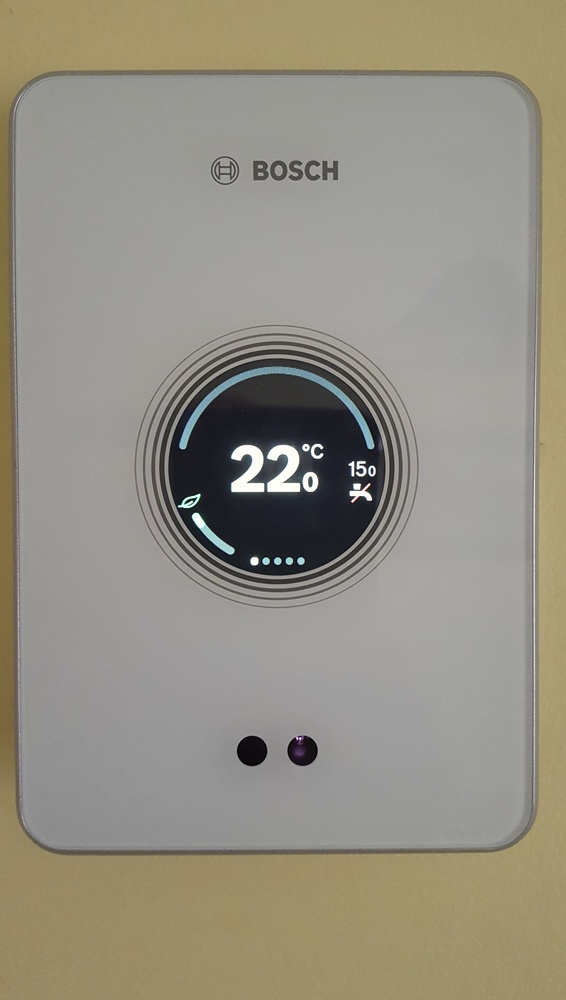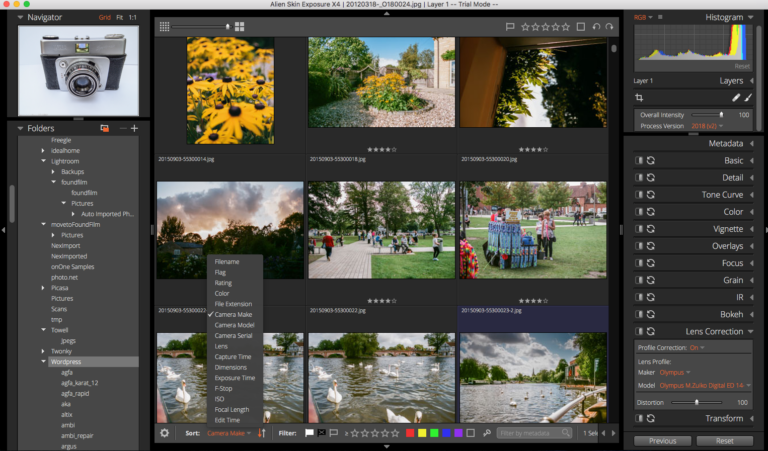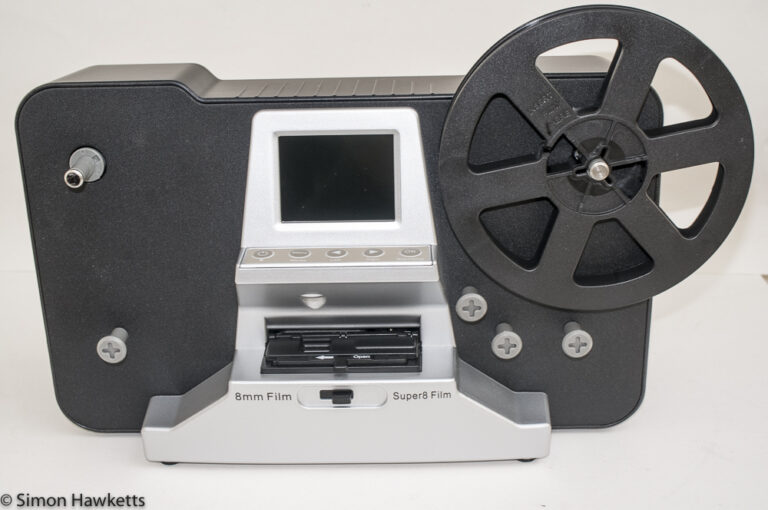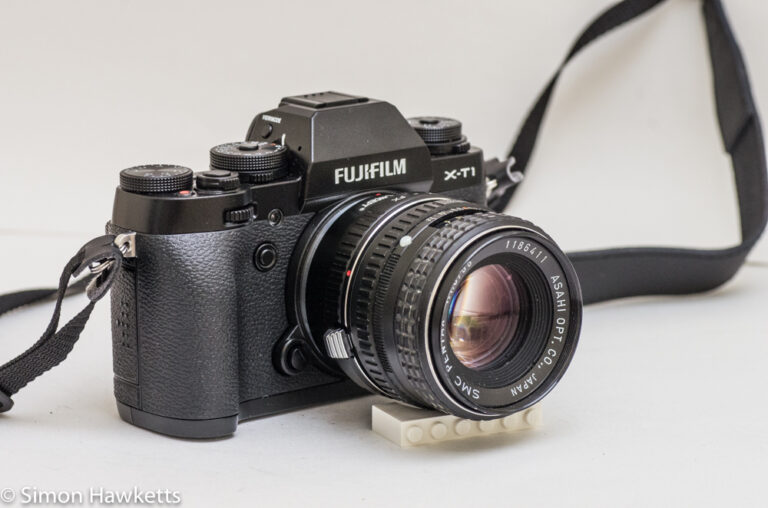Samyang 12mm f/2 lens on Fuji X-T1
The Fuji X-T1 is one of the top cameras in Fuji’s pro level mirrorless camera range, and there is a very good selection of professional quality lenses available for it. From zooms of all ranges to stunning quality prime lenses, it is possible to pick up a lens for virtually any purpose, with only one barrier for the amateur photographer working on a limited budget – price.
I’ve recently been thinking about buying one of these lenses, the Fuji 10-24mm f/4 wide angle zoom, but at £750 it is difficult to justify it as an amateur rather than professional photographer, so I started to look around at alternatives. It didn’t take long to find the Samyang 12mm f/2 prime as an alternative super wide angle lens, which is available at a fraction of the price of the fuji zoom. Obviously the fixed focal length makes it a bit less versatile than the zoom, but the max aperture of f/2 is a real bonus, especially since one of the reasons I wanted to get a super wide angle is for interior shots, so the extra couple of stops would come in very handy.
The Samyang lens is available at the moment for about £270 in Fuji X mount so the difference in price is significant but it’s not exactly a fair comparison since the Samyang lens is manual focus, prime lens and the fuji is an autofocus zoom. However, in many situation auto focus is not a big plus with a lens this wide, and anyway, the X-T1 is about the best camera there is to manually focus on, so after a bit of negotiation with my wife, I bought a copy.
Samyang 12mm f/2 Description
So what do you get for £270? Well you get a neat, compact lens which looks very well put together and made with nice materials.
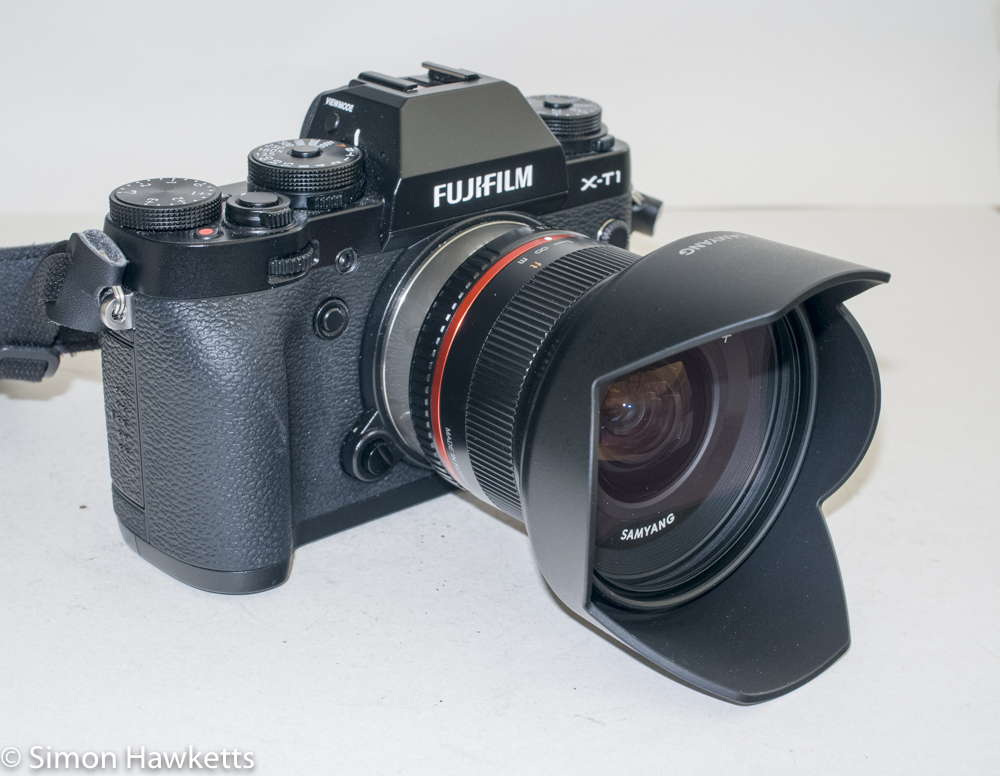
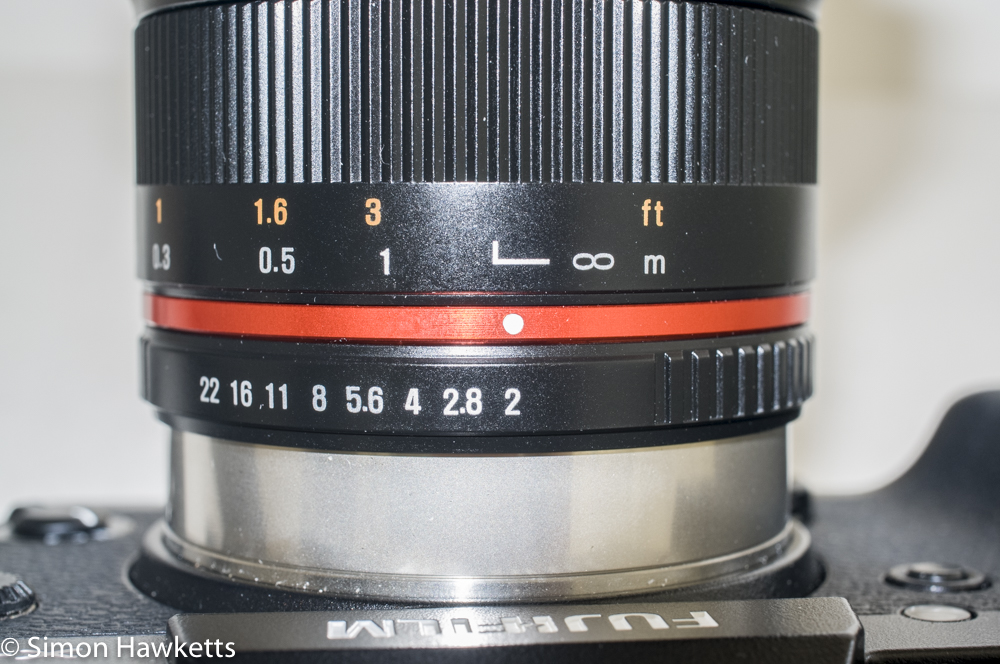
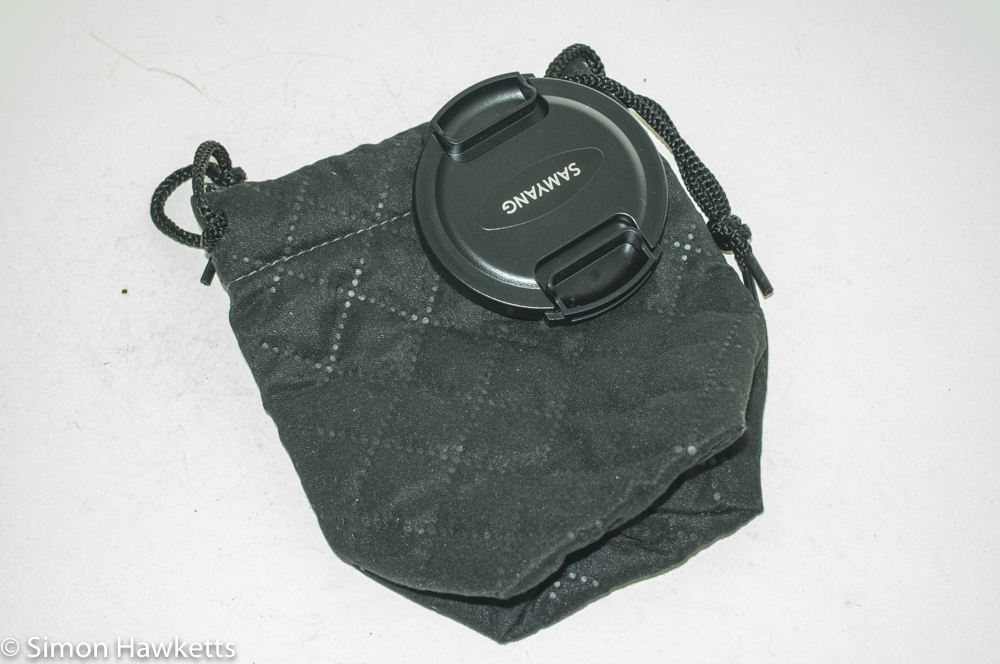
The lens is supplied in a box with an end cap, lens hood, lens cap, an instruction sheet and a nice padded bag to keep it in. The mount is solid aluminium, but there are no electrical contacts of any sort so the lens doesn’t communicate the aperture setting or the focal length to the body. In order to use the lens you have to turn on the option to release the shutter without a lens (since the body can’t communicate with the lens it doesn’t know it’s fitted)
I find the mount is very slightly loose on my camera body. Not loose in the sense of being sloppy, but as the focus ring hits the end stop there is a very tiny amount of movement in the lens body. It isn’t worrying, but is just a touch annoying – I’d like it to fit perfectly.
The supplied instruction sheet gives a run down of the main spec points for those who find these things interesting – the main points are:
- Focal length 12mm
- Aperture f/2 to f/22
- Focusing infinity to o.2M
- 12 elements in 10 groups
- 67mm Filter
- length: 60mm
- weight: 260g
Using the Samyang 12mm
Since the lens does not communicate with the camera body and the aperture is manually controlled with the aperture ring, only the fully manual or aperture priority exposure systems of the X-T1 work. By aperture priority mode I mean of course set the shutter speed and ISO to auto, since the X-T1 doesn’t have ‘modes’. One unfortunate by-product of the ‘non-communication’ between the lens and the body is the fact that the really good X-T1 depth of field display, where a graph at the bottom of the image shows the focus point and depth of field, doesn’t work.
Because the lens is a manual focus lens, I tend to set the EVF and LCD display to show the film simulation image with a black & white film selected. While using focus peaking to help with the manual focus, this allows the peaking to show up really well, but you need to make sure you shoot in RAW in order to have the colour information in the files.
The other great feature of the X-T1 which I use a lot with manual focus lenses is the magnified view. I set the camera to the normal full screen display (ie not the twin screen mode) and then a touch of the focus assist button magnifies the centre portion of the screen allowing me to see the focus peaked edges really clearly. If the magnification isn’t enough, the back control wheel allows the magnification to be changed and then a quick half-press of the shutter button resets the display to normal. If the object being photographed is not in the centre of the screen, the focus point can be moved by pressing the down button on the 4 way controller and moving it, but I tend to move the camera to focus and then re-compose.
The controls on the lens are nicely machined and have a solid, good quality feel. The aperture ring has half-stop clicks and the focus ring has a total travel of about a third of a turn which means it’s possible to travel the whole focus distance without having to do a lot of hand movement.
Sample Pictures
To try the Samyang 12mm out I took a trip into Stevenage on Saturday and took the pictures below in a walk around the town centre. Other than being told by a greengrocer that I should have asked his permission to take pictures of his vegetables (which were in boxes out on the street), it was a fairly uneventful walk and allowed me to concentrate on using the lens with the X-T1.


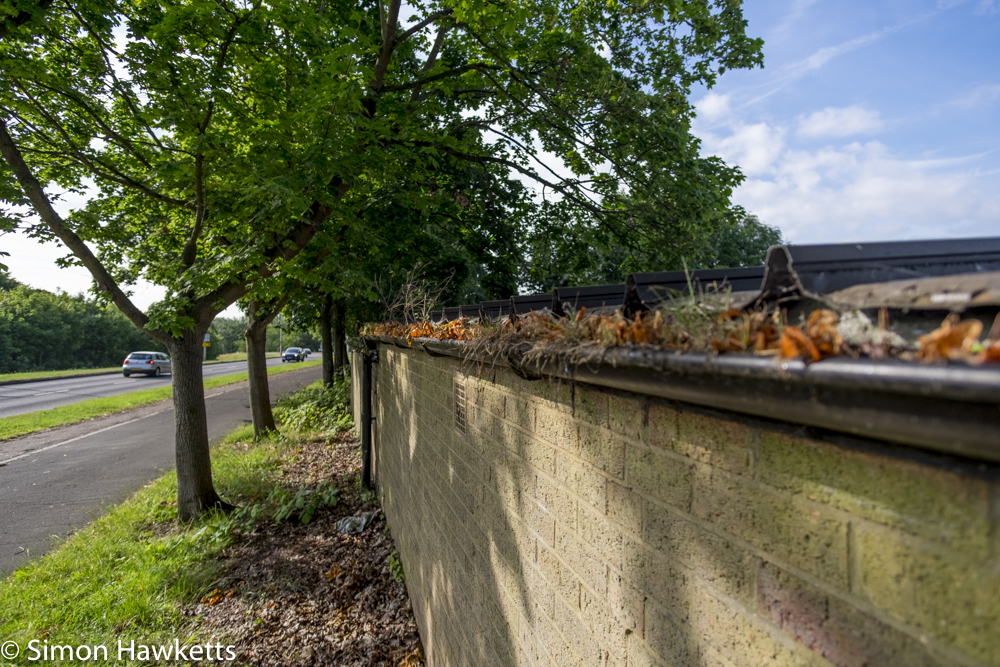
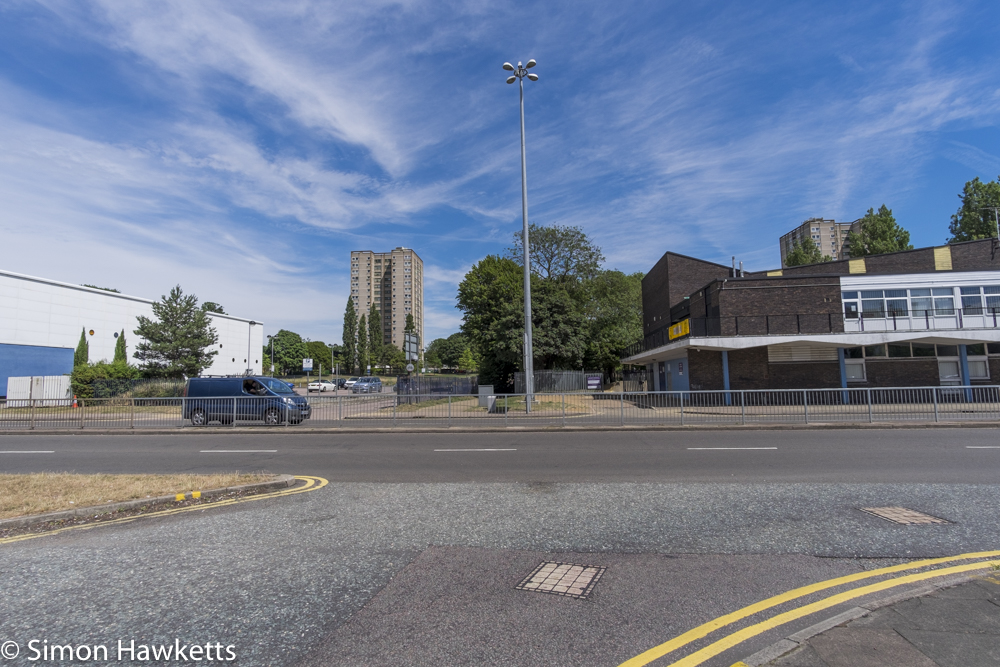
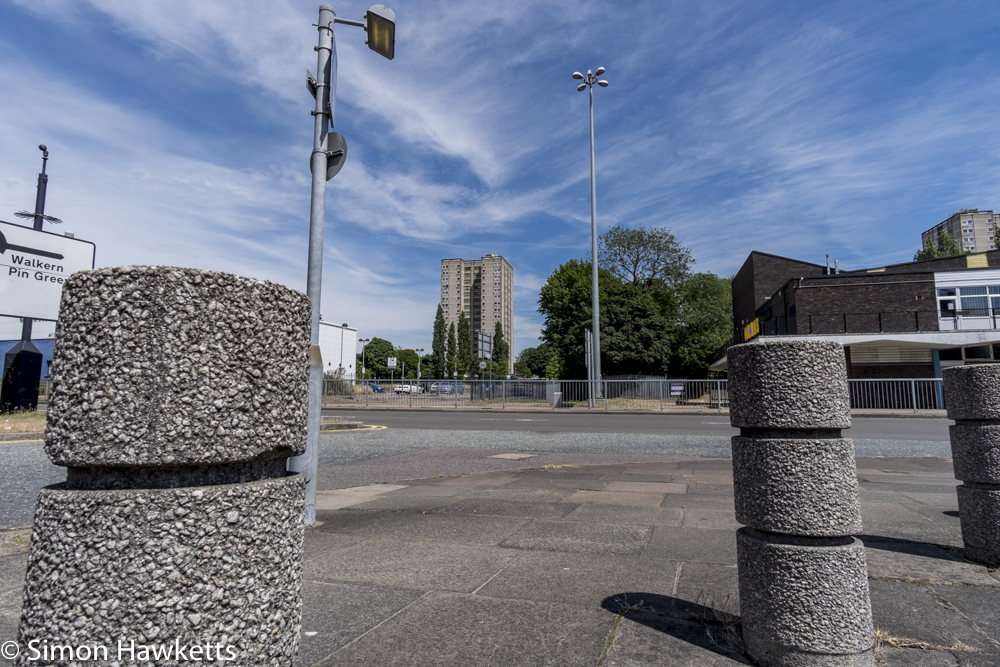
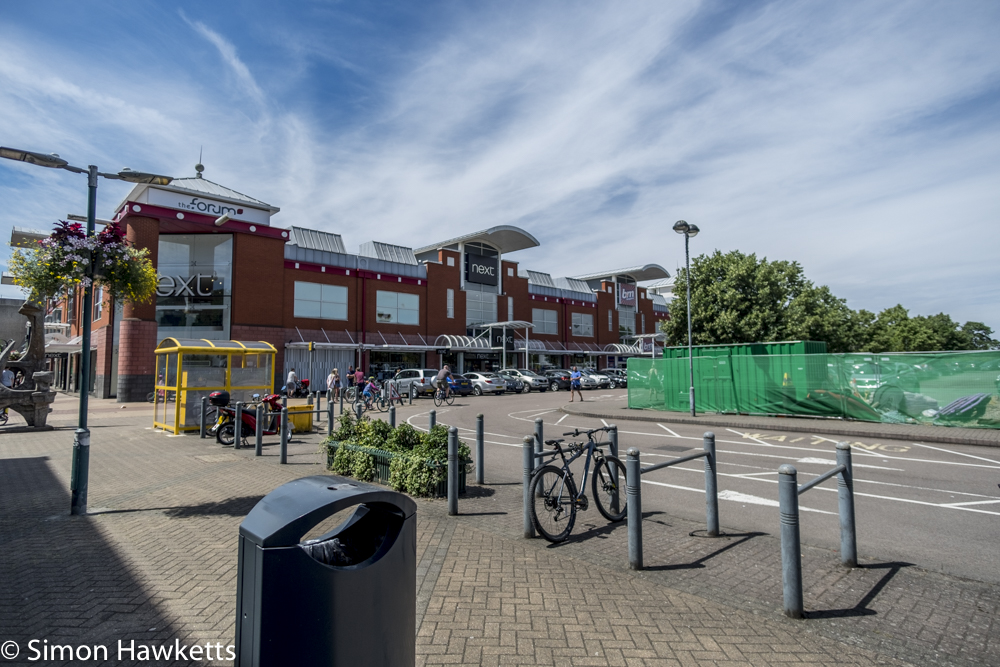

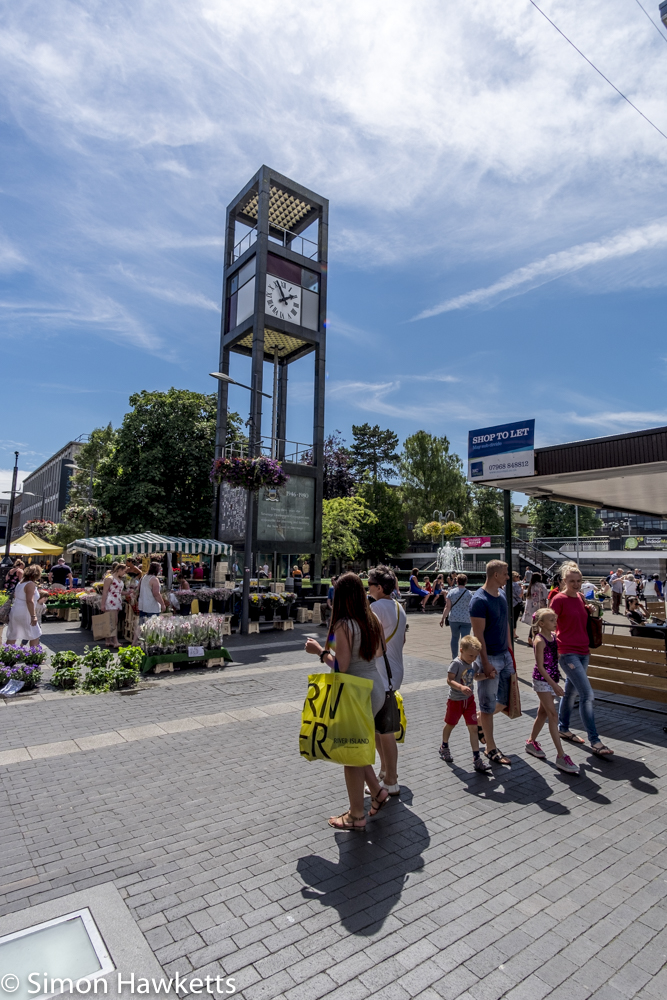


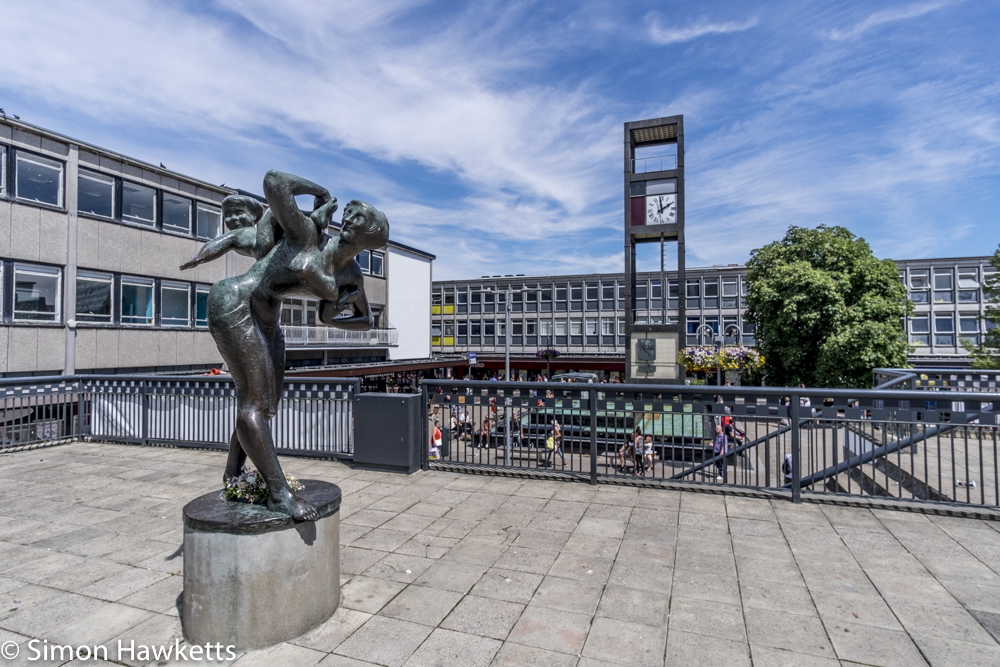
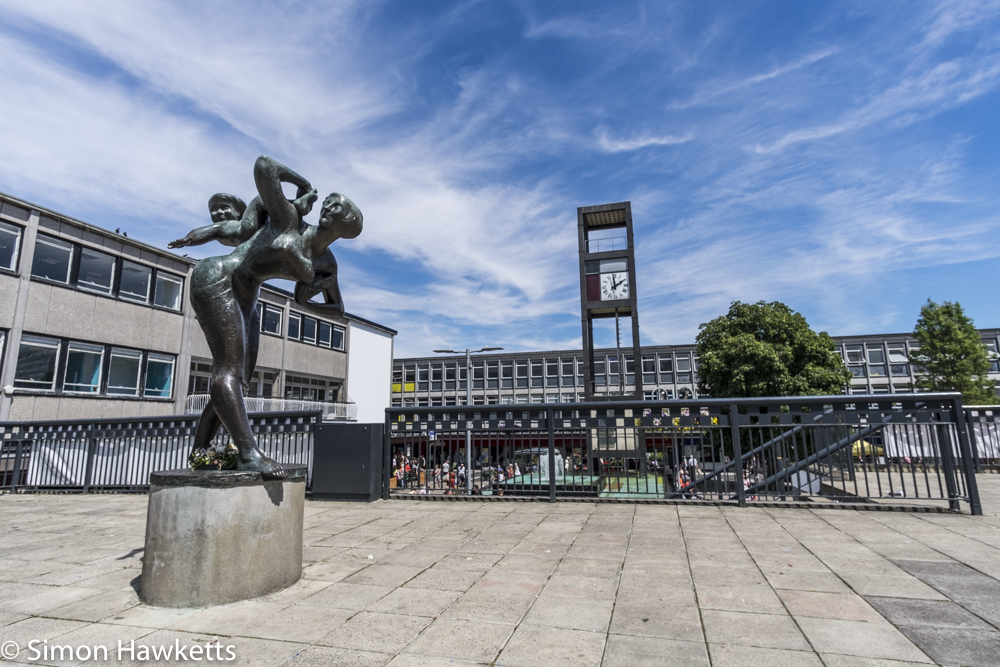



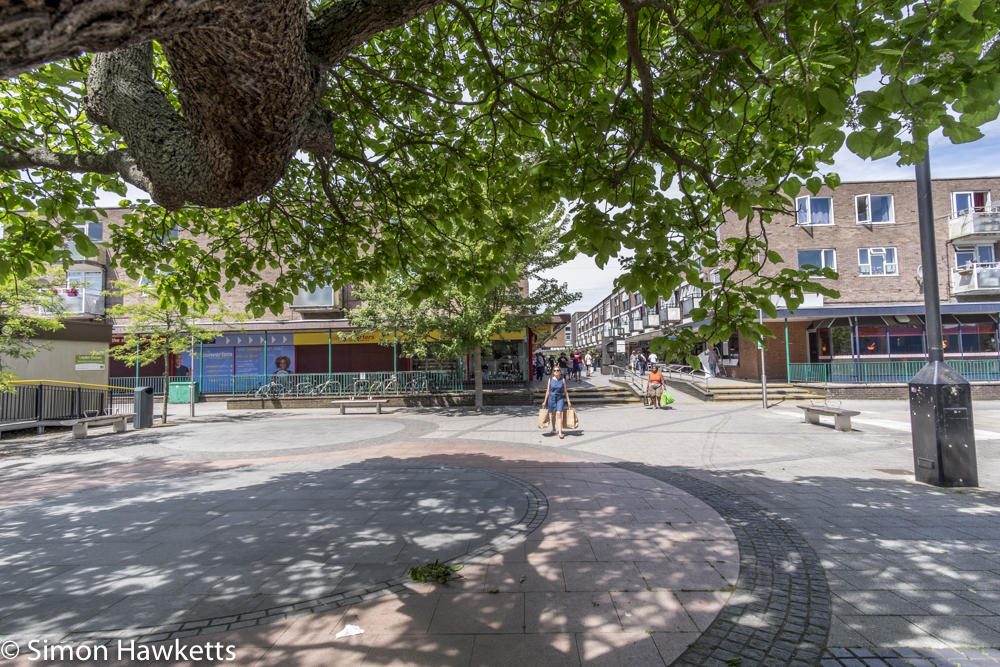

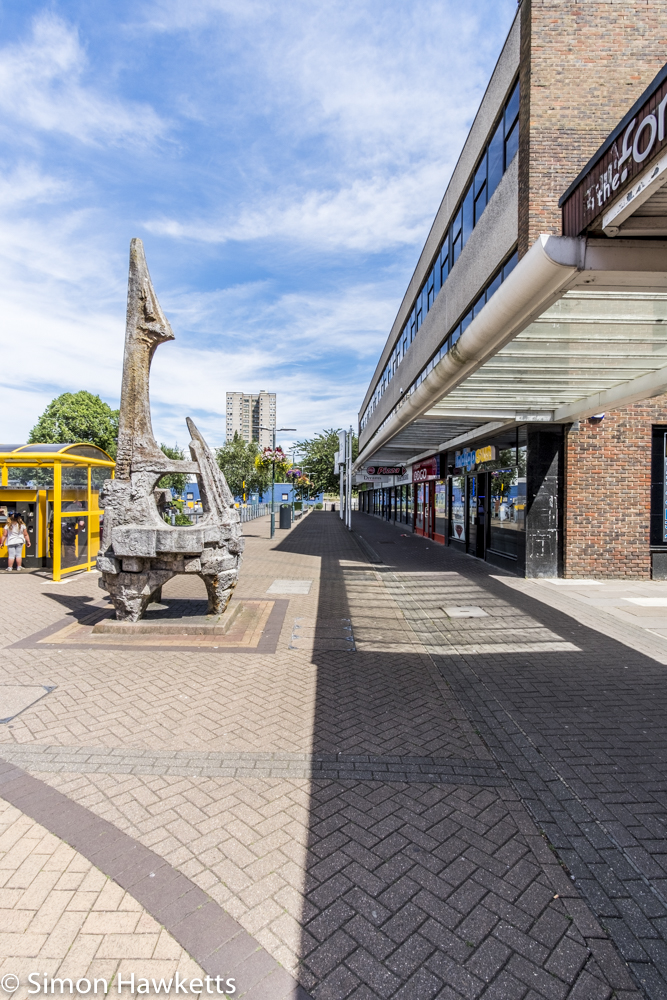
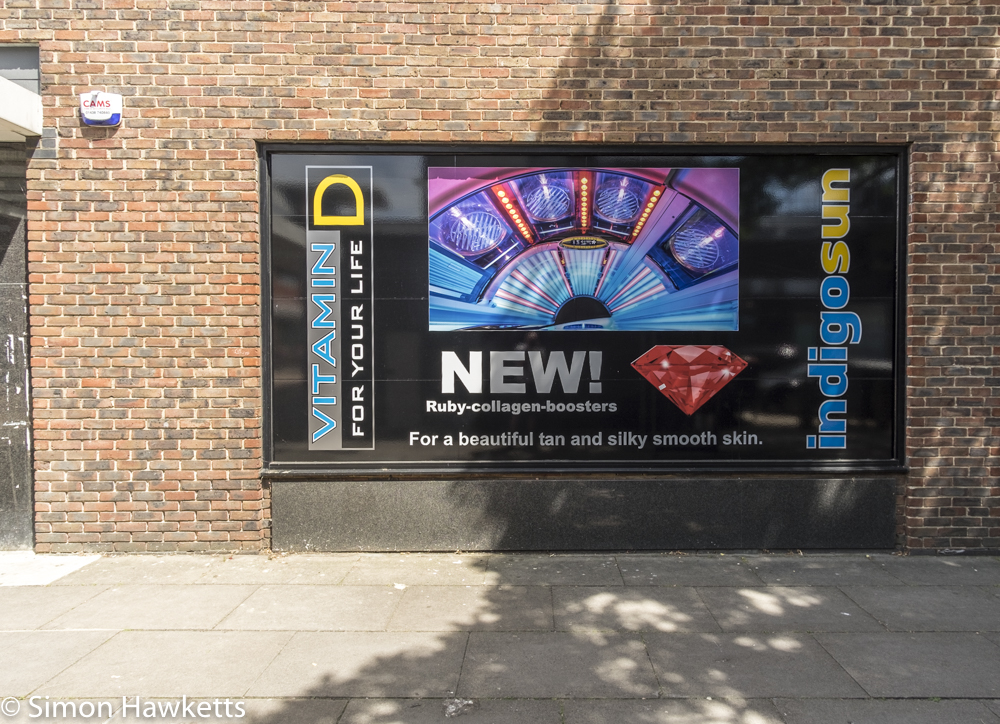
I have to say I’m impressed. The definition, colour and contrast of the lens is outstanding and although I don’t have the original zoom lens I was thinking of buying for comparison, the results are certainly as good as the only Fuji prime lens I have which is the Fujinon Super EBC 27mm f/2.8.
Some close crops
These are some crops I took from one of the pictures above to show the corner and centre performance of the lens. For people who like to pixel peep (and I admit I am a bit obsessed like that) they show the lens has very good overall performance. There is a small amount of blur in the corners, but not anything to be at all concerned about.
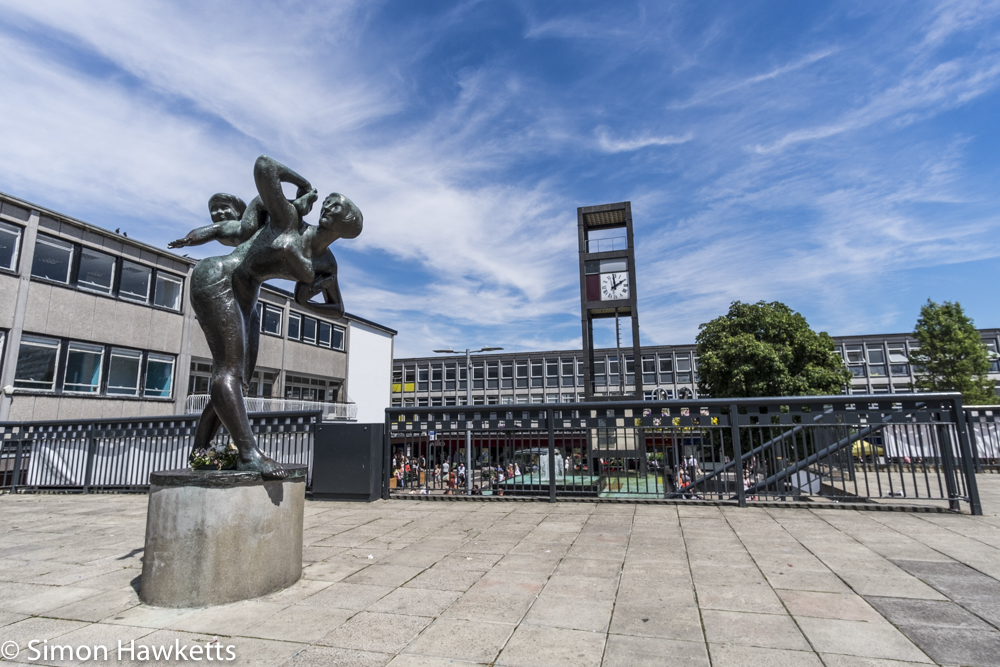
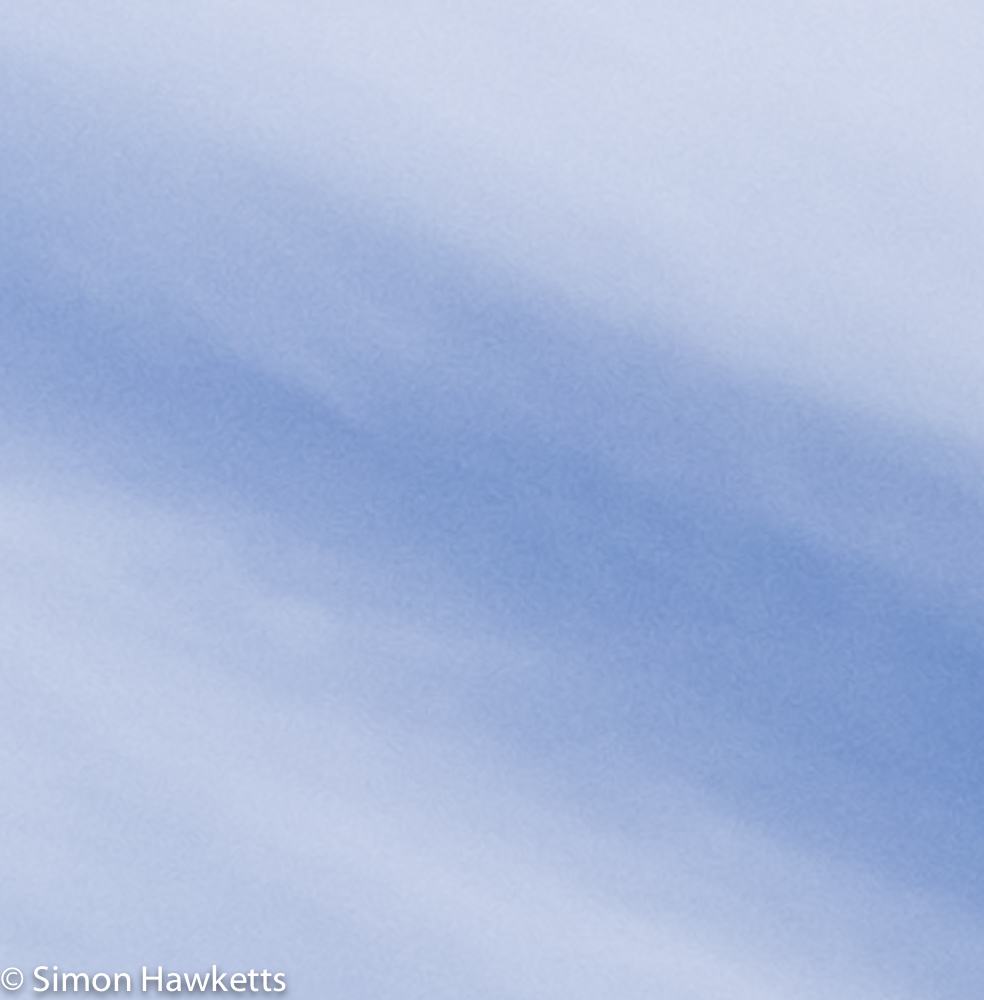
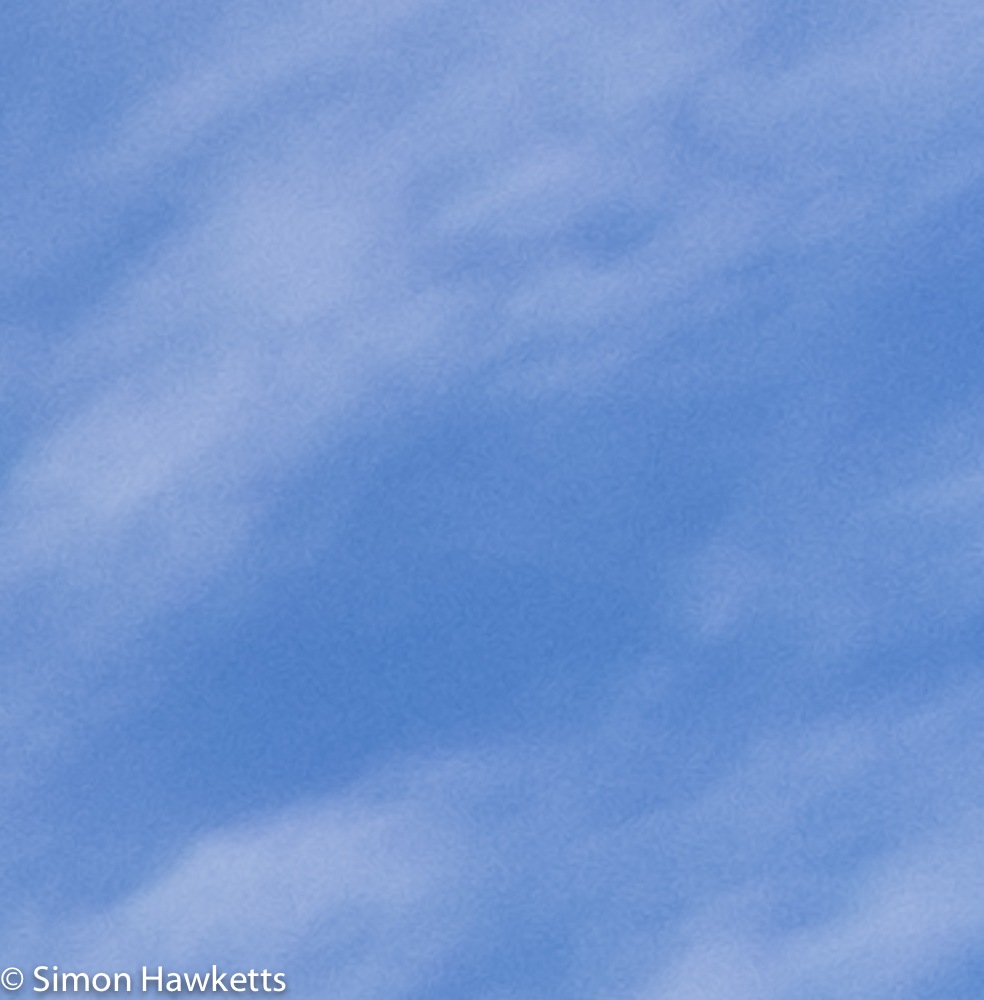
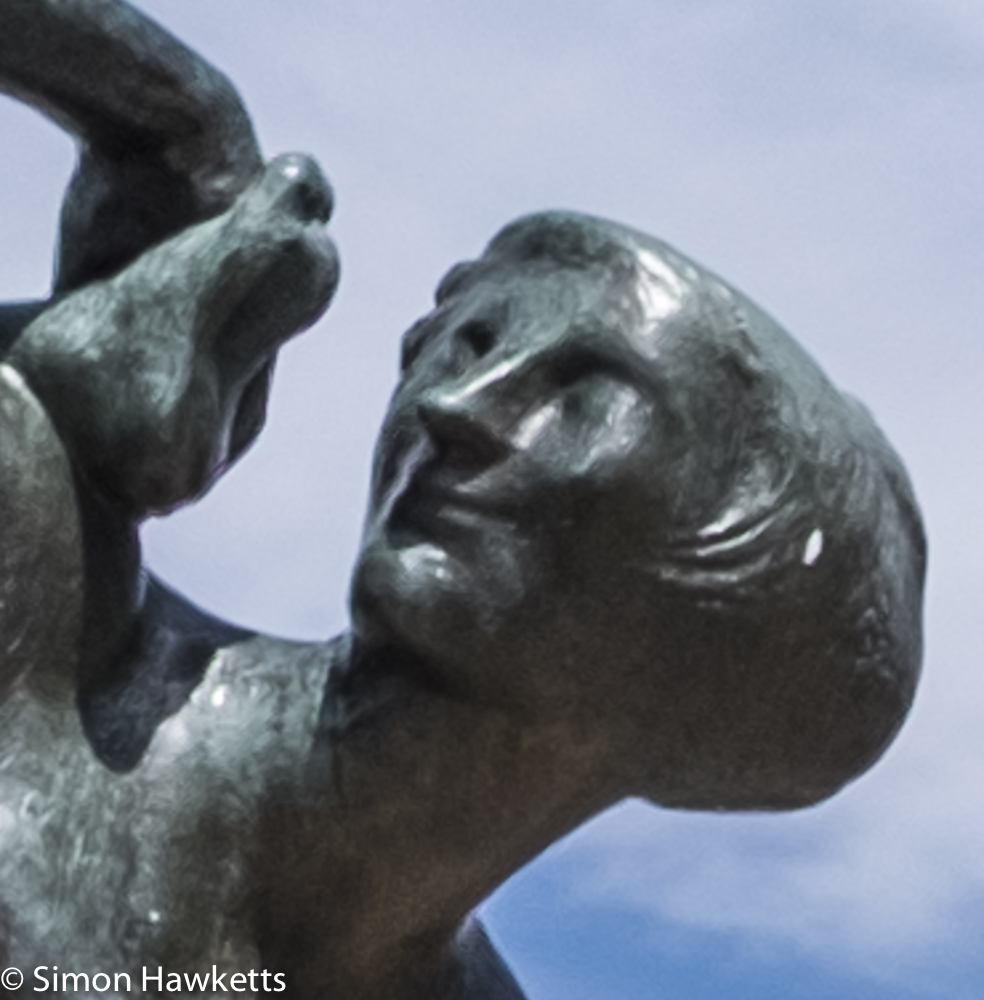
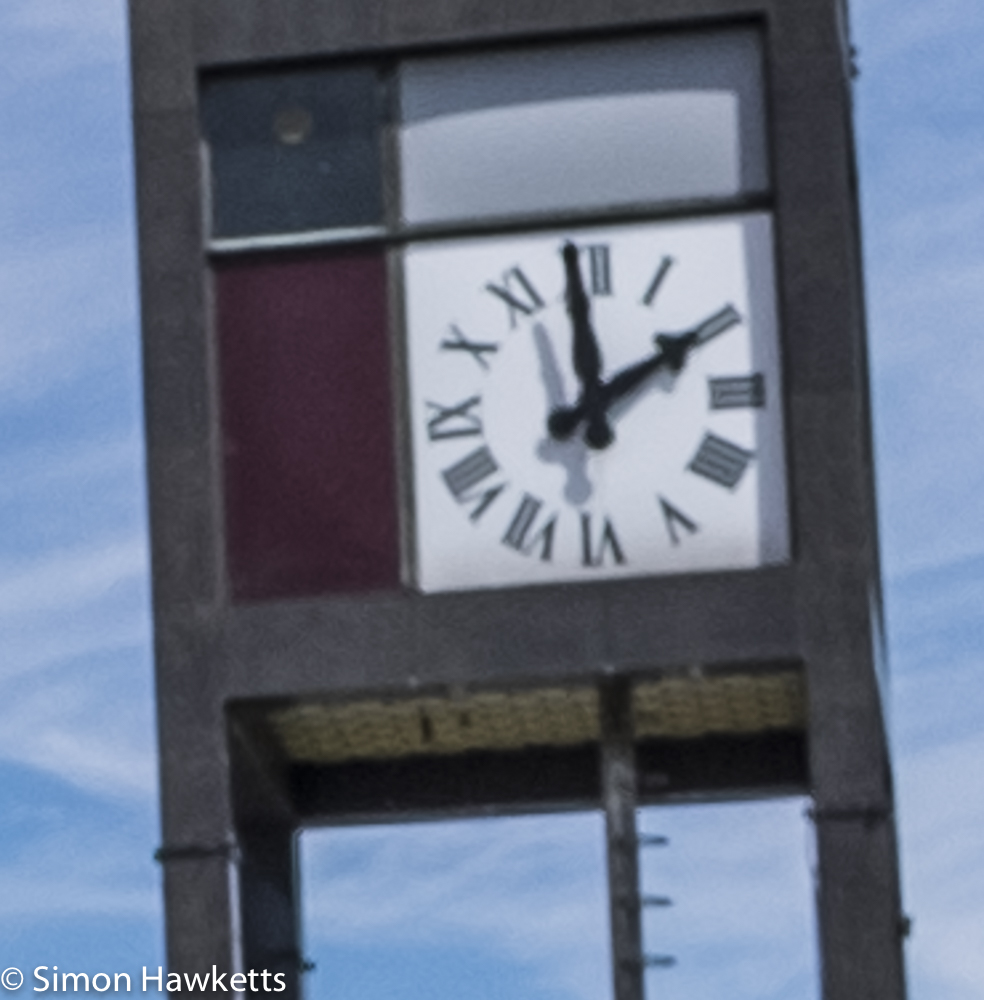
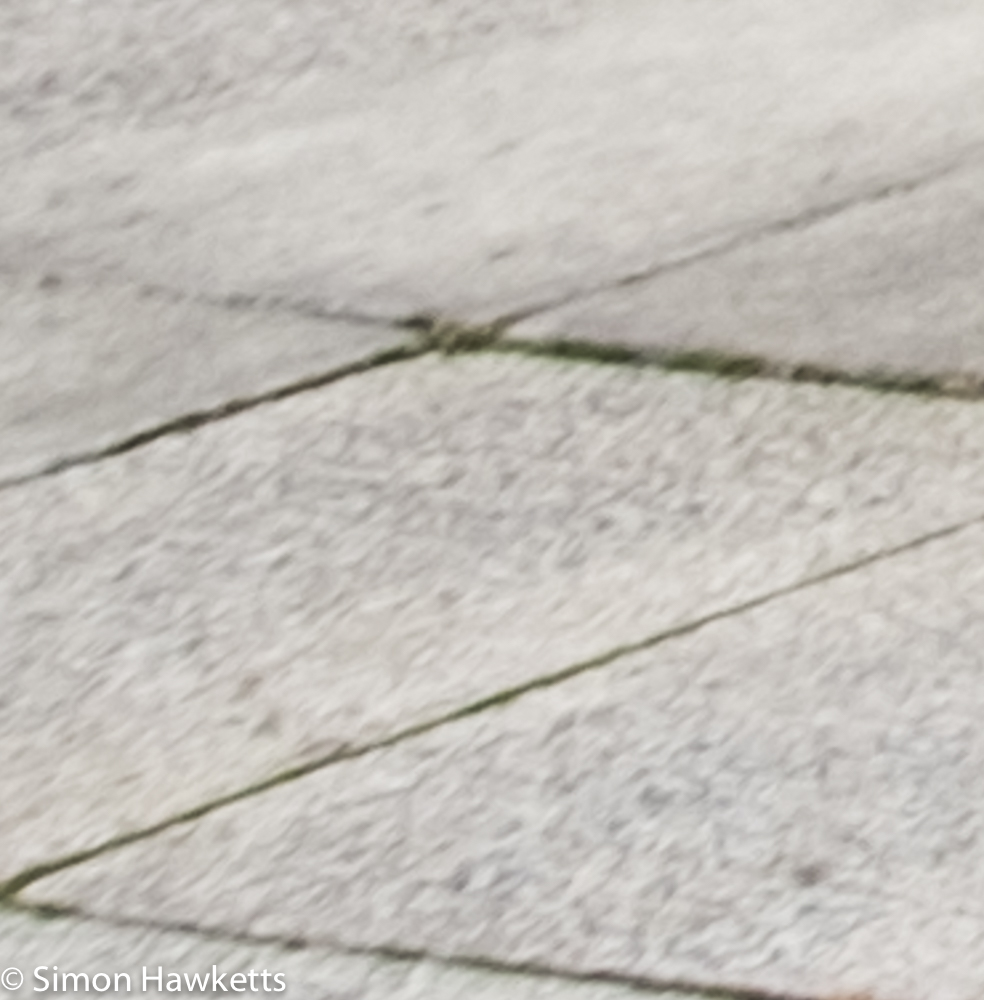
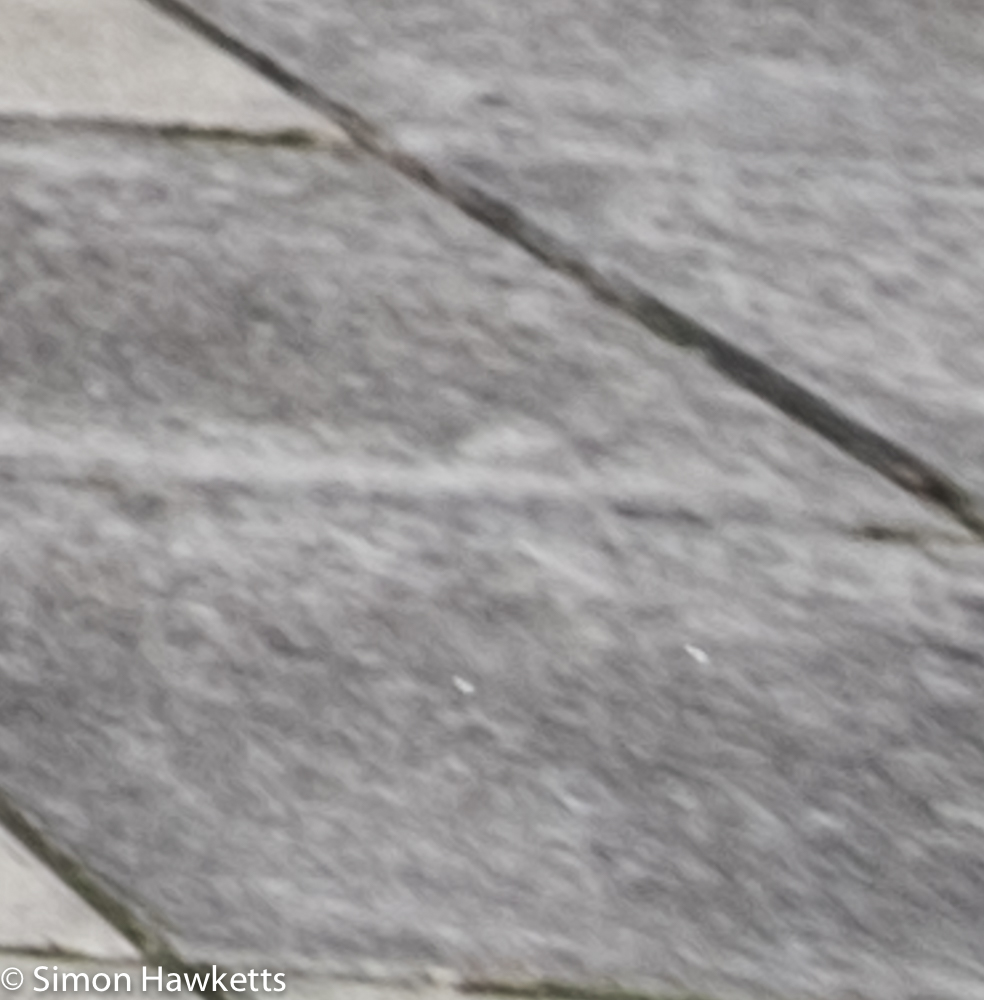
Post Processing
Just a word on Post Processing. Most of these pictures were taken in RAW format, with the camera set to Auto ISO (200 to 6400 with a minimum shutter speed of 1/125) and Auto shutter speed, so in effect Aperture Priority. The only exception is the square format picture which is a crop of a picture I took at 1/30th sec in order to get some motion blur in the car. The images were imported into Lightroom and I applied the standard Samyang 12mm profile which is supplied by Adobe to correct for any distortion. The Highlight, Shadows, Blacks and Clarity sliders were adjusted to get the look I like, and then the pictures exported as jpegs for import to this article.
Conclusion
My conclusions from this test are that the Samyang 12mm f/2 is a really good performer and capable of some great results. Over the last year or so, since I’ve owned my X-T1, I have still gone back to my Pentax K5 when we go on holiday because the K mount Tamron 10-24mm wide angle I own is my favourite lens for landscape, interior and high impact shots. Although I can use that on the Fuji with an adapter, the lack of an aperture ring makes exposure more tricky, so I’ve tended not to use it. The addition of the Samyang means that I now have a wide angle lens for the X-T1 which easily matches the Tamron for performance and is actually easier to use.
I found that focusing the lens on the Fuji is easy when it’s necessary, but for most shots if the aperture is set to f/8 or f/11, which would be a normal setting on a reasonably bright day, the focus can be set a bit off infinity and ignored.
Anyone thinking of purchasing a Samyang 12mm for their X-T1 should be aware that the lens is also sold under the name of Rokinon.

